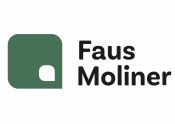Which medicinal products are subject to joint clinical assessments?
European Commission’s Q&A document of 5 September 2025 on Regulation (EU) 2021/2282 on health technology assessment (HTA)
Capsulas Nº 265
Background
The HTA Regulation entered into force on 12 January 2025. Its major innovation is the so-called joint clinical assessments (JCAs), shared evaluations that EU Member States must take into account when carrying out their own national health technology assessment processes. JCAs will determine the scope of the assessment, by defining the PICOS (population, intervention, comparators and outcomes). They will also describe the relative efficacy and safety of the medicinal product compared with its comparators, as well as the quality of the evidence submitted. Although JCAs do not issue a verdict on added value and Member States are not obliged to adopt them – but only to “take them into account” – their content may significantly shape national assessments and, therefore, may influence pricing, reimbursement, and market access prospects in each Member State.
At present, eight JCAs are under way – two advanced therapy medicinal products (ATMPs), two biologics and four chemically synthesised molecules – and many more are expected in the future.
For companies, it is key to know which medicinal products will be required to undergo a JCA in order to anticipate and plan their regulatory and market access strategies. This is important because, once the process begins, the timelines to prepare the HTA dossiers and supporting documentation are fairly short. These criteria are set out in the HTA Regulation, and the European Commission (EC) has recently published a Q&A document clarifying which products fall within the scope of JCAs.
General criteria for inclusion
A JCA is required for medicinal products that meet three conditions:
(i) they are required to submit a centralised marketing authorisation (MA) application in the EU – i.e. they are listed in Annex I to Regulation (EC) 726/2004 – or contain an active substance that was not authorised in the EU on 20 May 2004;
(ii) they have been the subject of a centralised MA application based on a full dossier (Art. 8.3 Directive 2001/83/EC); and
(iii) the MA application date falls after the relevant cut-off dates depending on the product.
Cut-off dates
The first cut-off date was 12 January 2025. This affects ATMPs or products containing a “new active substance” for the treatment of cancer. This is the case for the eight JCAs currently in progress.
As regards the requirement to contain a “new active substance”, the starting point is the applicant’s declaration that the active substance is new, a condition subsequently verified by the EMA during the regulatory procedure. In this regard, the EC clarifies that if the EMA ultimately determines that it is not a new active substance, this conclusion will not have retroactive effects nor alter the decision to initiate or terminate the JCA.
The EC also specifies that a “new active substance” may be included in combination with another substance that has already been authorised; and that in the absence of a definition of “cancer treatment” in the HTA Regulation, reference should be made to the guidelines drawn up for this purpose by the HTA Coordination Group.
It also notes that the HTA Regulation does not distinguish between types of MA (e.g. conditional or standard) and therefore, the granting of a conditional MA should have no impact on the continuation and completion of the JCA procedure.
The second cut-off date will be 13 January 2028. This will cover orphan medicinal products. At this point, the EC clarifies that, unlike the provisions for the first cut-off date, the second cut-off date does not include the requirement of a “new active substance”. It further explains that if the medicinal product loses its orphan status after the start of the JCA, this will not have a retroactive impact on the decision to initiate or terminate the JCA.
The third cut-off date will be 13 January 2030. From that date onwards, all medicinal products that meet the above-mentioned three general criteria will be required to undergo a JCA.
New indications
If a medicinal product has undergone a JCA, any new indications must also be subject to a JCA. The EC clarifies that the HTA Regulation requires the original JCA to have been published – not merely approved – and that the type of variation used to add the new indication is irrelevant.
